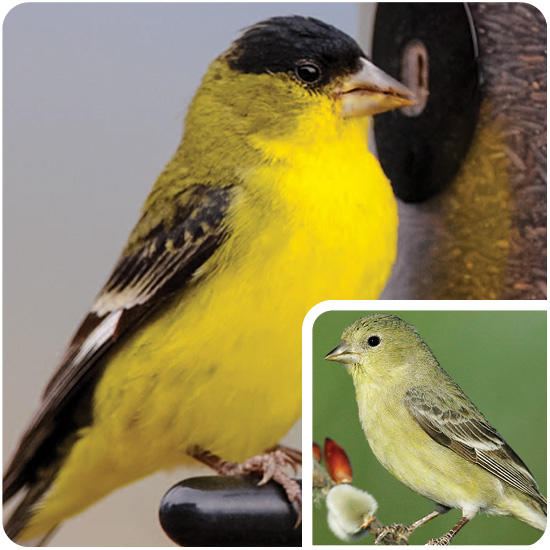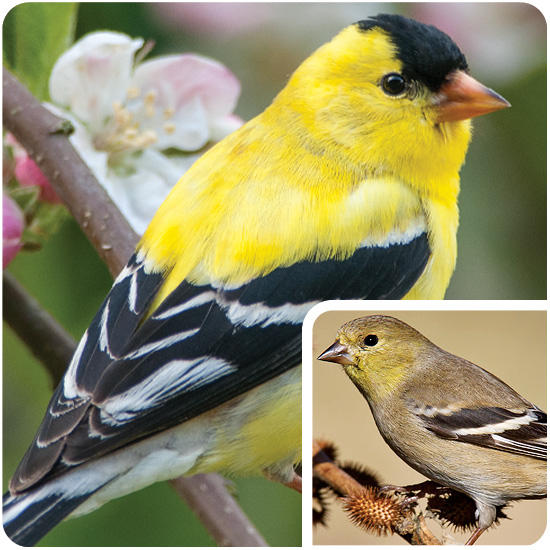Meet Your Neighbors . . .
This Page is a Work In Progress -- bear with us as we grow!
A list of backyard birds commonly found in the greater San Diego area. (The smaller image shows a female of the species). Click the bird for even more details from the Laboratory of Ornithology at Cornell University.
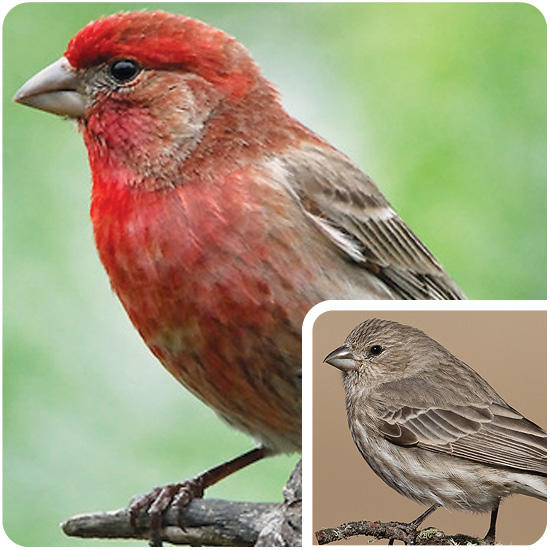 House Finch
House Finch
Food: Seed, fruit, insects and suet. Here's a list of products available in our store for feeding house finches: No-Mess Blend, Finch Blend, Medium Sunflower Chips, Super Suets (cakes or cylinders), Black Oil Sunflower, Bark Butter (spreadable or cylinders), Nesting SuperBlend™, Bark Butter™ Bits, White Millet (with/without the shell), Meal worms, peanuts, Nyjer™
Season: Year round
Fun Facts: Our most common feeder bird. Originally a west coast resident. In 1940 a small flock of the "Hollywood Finches" were released in New York and now call both coasts home.
Lesser Goldfinch
Food: Seed, thistle, Sunflower Chips. Here's a list of products available in our store for feeding house finches: No-Mess Blend, Finch Blend, Medium Sunflower Chips, Nyjer™
Season: Year round
Fun Facts: Goldfinches are among the strictest vegetarians in the bird world, selecting an entirely vegetable diet and only inadvertently swallowing an occasional insect.
American Goldfinch
Food: Seed, thistle, Sunflower Chips. Here's a list of products available in our store for feeding house finches: No-Mess Blend, Finch Blend, Medium Sunflower Chips, Nyjer™
Season: October to Mid-May
Fun Facts: American Goldfinches have been known to weave their 3" cup nest so tight that it could hold water -- which could prove to be detrimental should a late summer shower pass through.
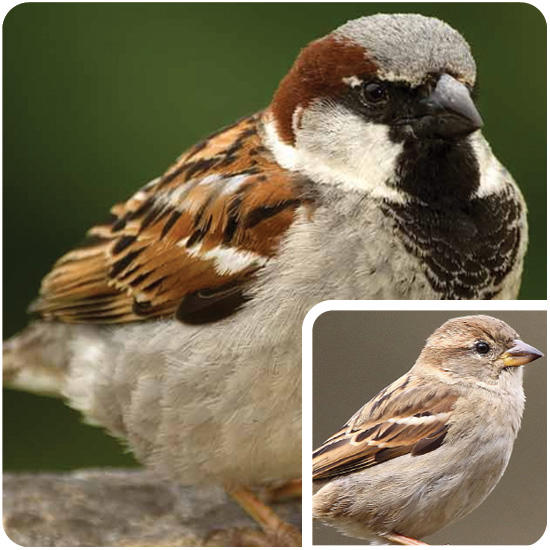 House Sparrow
House Sparrow
Food: Seed, fruit and insects. Here's a list of products available in our store for feeding house finches: No-Mess Blend, Supreme Blend, Deluxe Blend, Medium Sunflower Chips.
Season: Year round:
Fun Facts: Introduced into New York from Europe in 1851, it took only 50 years for this little bird to colonize the entire country!
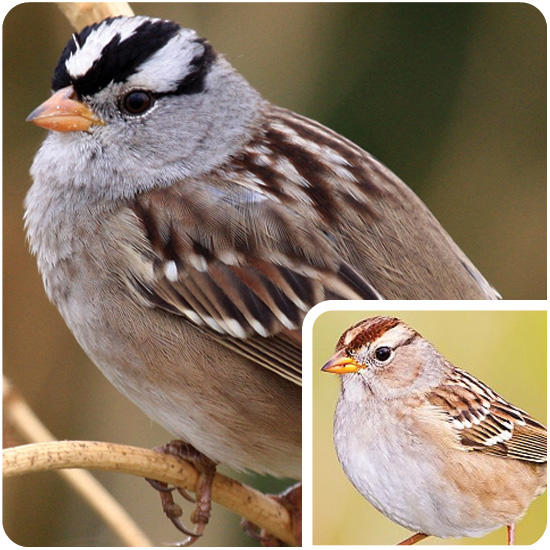 White-crowned Sparrow
White-crowned Sparrow
Food: Seed, insects and suet
Season: Mid-September to Mid-April
Fun Facts: Many White-crowns breed as far away as Alaska and make the 2600 mile trip back to us every winter. During migration they usually travel 70 hrs. a day, One was tracked travelling 300 miles in a single night!
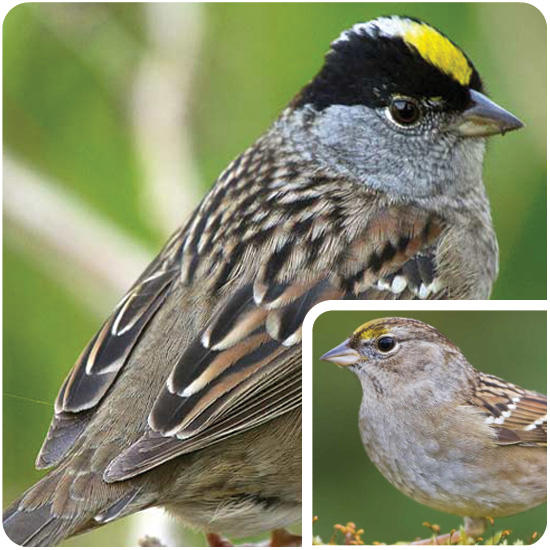
Golden-crowned Sparrow
Food: Seed, fruit, insects and suet
Season: October-April
Fun Facts: Miners in the Yukon once interpreted this sparrow's song to say "I'm so tired," prompting them to dub this bird "Weary Willie."
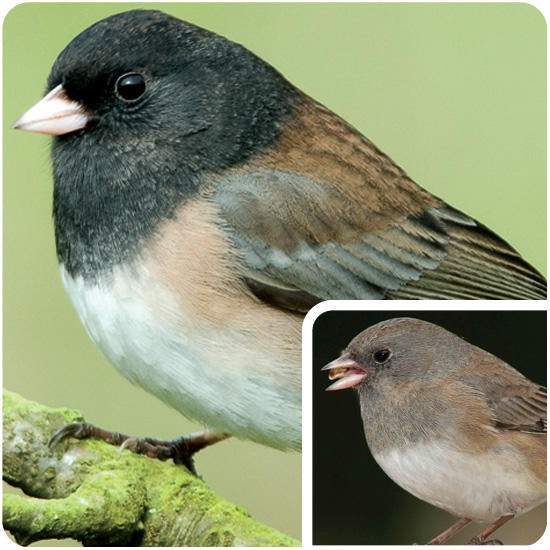 Dark-eyed Junco
Dark-eyed Junco
Food: Seed, fruit, insects and suet. Here's a list of products available in our store for feeding Dark-eyed Juncos: No-Mess Blend, Finch Blend, Medium Sunflower Chips, Super Suets (cakes or cylinders), Black Oil Sunflower, Nesting SuperBlend™, White Millet (with/without the shell), Nyjer™
Season: Year round. Most prominently seen in Winter.
Fun Facts: Neat, flash little sparrows, that flit about the forest floors of the Western mountains, then flood the rest of North America during Winter. Find this bird by walking around open, partially wooded areas, with leafy debris for cover. Keep your eyes on the ground and listen for their twittering call or trilling song. If flushed into the open, look for an overall gray bird with obvious white outer tail feathers.
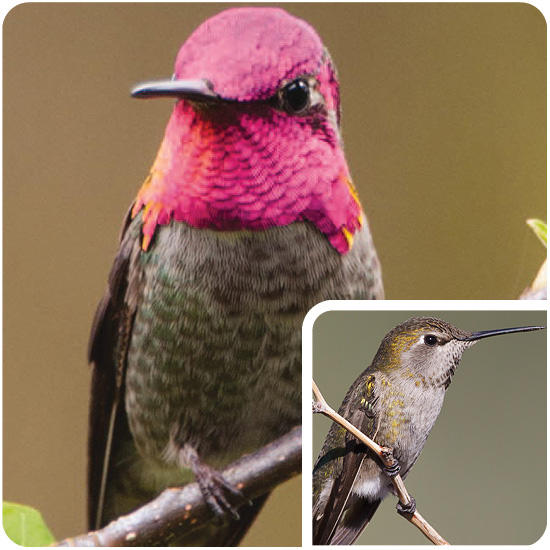 Anna's Hummingbird
Anna's Hummingbird
Food: Nectar, small insects (spider eggs, aphids, white fly)
Season: Year round
Fun Facts: Hummers maintain a body temperature of 107° Fahrenheit. In cooler weather they enter a state called torpor: breathing and heart rate slow, and their temperature can drop as low as 48°.
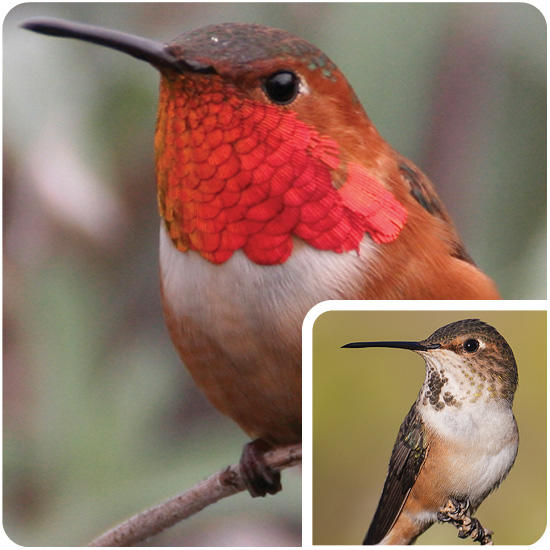
Allen's Hummingbird
Food: Nectar, small insects (spider eggs, aphids, white fly)
Season: Year round
Fun Facts: Even though it's the smaller of Southern California's 2 resident hummingbird species the Allen's is much more aggressive and often spends all day chasing competitors off "his" feeder.


